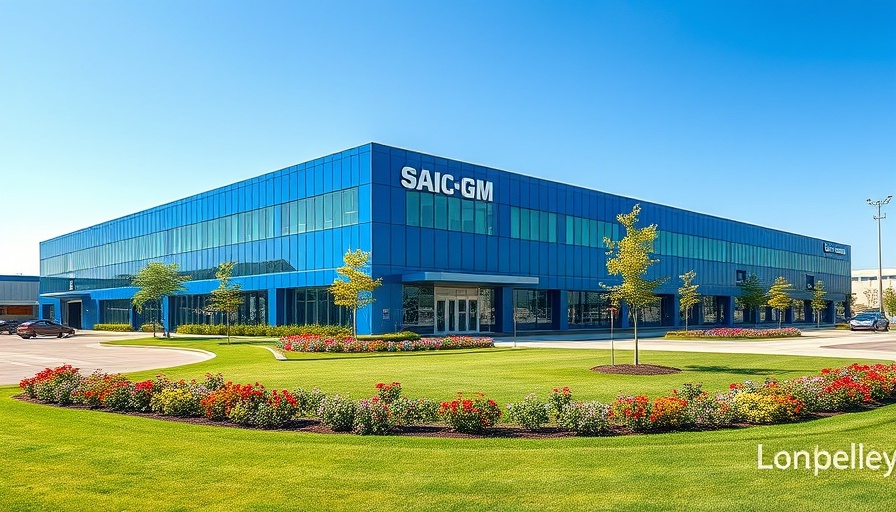
General Motors Restructures Amid Tough Competition in China
General Motors (GM) has announced the impending closure of its Shenyang plant in China as part of a strategic pivot to address significant financial challenges and intensifying competition from local manufacturers. This decision follows a substantial decline in unit sales, with GM's report indicating a staggering almost 60% drop in the first eleven months of the previous year, leading to overall losses for the company. The plant, which produced the Buick GL8 minivan and Chevrolet Tracker SUV, has become unsustainable as GM seeks to realign its focus toward premium and electrified vehicles, a trend that is resonating deeply within the fast-evolving Chinese automotive market.
The Shifting Landscape of the Automotive Market in China
China's automotive market is undergoing a rapid transformation as local electric vehicle (EV) manufacturers like BYD and Geely are gaining firm ground. Their success is largely due to attractive government subsidies and aggressive pricing strategies, which have left foreign automakers like GM struggling to keep up. At a recent Wolfe Research conference, CEO Mary Barra characterized this shift as one rooted in consumer preference for desirable, technologically advanced vehicles that meet the modern demands for sustainability and luxury.
The Financial Toll and Corporate Strategy
GM's Q4 disclosures revealed a need to record over $5 billion in impairment charges, attributed to restructuring costs exceeding $2.6 billion. With significant job cuts anticipated, this restructuring is GM's response to the stark reality of declining sales in a market where it once thrived. Notably, GM's operations in China, especially in collaboration with SAIC Motors, are adapting amidst these challenges, with a promise from the company to maintain a presence in this vital market.
Building the Future: Luxury and Electrification
Amid ongoing closures, GM is simultaneously developing its exclusive retail channel, the Durant Guild, aimed at attracting affluent customers in major cities. This initiative seeks to market higher-end models like the Yukon and Tahoe SUVs to a rapidly growing demographic of luxury consumers in China. The intent behind this strategic shift underscores GM's aim to reclaim market share by catering to the premium segment, aligning with the evolving expectations of a new generation of Chinese consumers who prioritize quality, technology, and sustainability.
A Long-term View of GM's Position in China
Historically, GM's relationship with the Chinese market has been complex. Once praised for its early entry and dominance, GM now finds itself at a crossroads, with a declining market share that has fallen from a peak of 4.04 million vehicles sold in 2017 to just 1.8 million in 2024. As legacy automakers confront the rising tide of EVs and shift toward electrification, the stakes grow higher. Analysts, including Dan Ives from Wedbush Securities, speculate whether GM can sustain its foothold in a market characterized by relentless competition and technological advancement from homegrown brands.
Conclusion: Moving Forward with Caution
The closing of GM's Shenyang plant is a clear indicator of the challenges legacy car manufacturers face in adapting to a rapidly evolving automotive landscape. As GM rethinks its strategy in favor of premium and electric vehicles, the journey ahead will require not just resilience but a deep understanding of the changing preferences of Chinese consumers. For dealership principals and GMs seeking insight into market trends, staying informed about these developments will be crucial in formulating finance strategies and navigating financing in an increasingly competitive environment.
As the auto industry shifts gears, understanding implications for used car financing rates and the upcoming trends in vehicle financing could be invaluable for dealerships striving to remain competitive.
 Add Row
Add Row  Add
Add 




Write A Comment